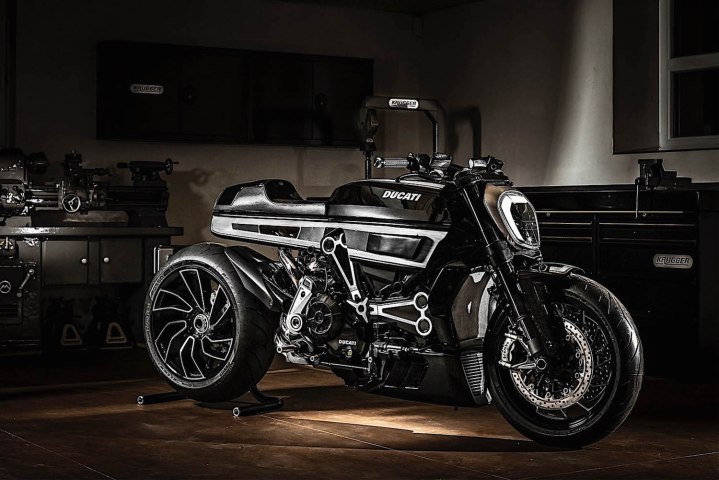
Fred Krugger has won the AMD World Championship of Custom Bike Building and has received a number of other honors during his 20-plus years of tinkering. After seeing what Roland Sands and the Ducati Center did with the XDiavel earlier this year, Krugger decided to put his own spin on the sport cruiser.
And thus, the Ducati Thiverval was born. Instead of completely following the XDiavel’s outlandish styling, Krugger mixes in some of his own distinctive cues. At the front, the Thiverval retains the original bike’s headlight and front fork, but swaps in a custom wheel fender. In profile, you can see the most significant changes, including a special tank, seat, and rear cowl. Krugger’s silver-on-black graphic that starts at the front wheel and continues to the end of the bike matches Ducati’s stock L-twin painted accents.

At the narrowed rear, a single taillight invokes early ’90s sport bikes, with dual exhaust ports tucked neatly into the truncated tail. As a whole, the Thiverval is a bit less frenetic than the original XDiavel, but the bike continues to command attention. We’re quite taken with the Thiverval’s clean aesthetic, especially as it addresses the XDiavel’s weakest visual cues from the trailing arm rearward. Now whether that narrow saddle is comfortable or not — that may be a different story.
Ducati fans will be pleased to know that Krugger left the XDiavel’s powertrain untouched. The L-twin motor makes 156 horsepower and 95 pound-feet of torque from 1,262 cc’s of displacement. Peak torque is available at 5,000 rpm, and another surge of torque appears at 7,500 rpm. We were more than impressed with how the XDiavel handled itself in a straight line and through corners when we tested it last year.
The Thiverval is now on display at the 2017 Bikers’ Classics in Belgium. Krugger hasn’t given his latest creation a price tag, but considering the standard XDiavel starts at $20,000, expect the added flair to come with a steep surcharge.


